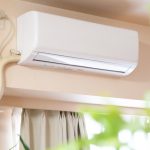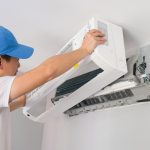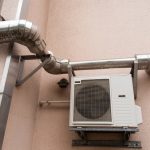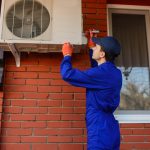
HVAC Filters: What You Need to Know
Maintaining your HVAC system is key to keeping it running efficiently for a long time. There are several moving and static parts that make up this system. Filters are one component that you as a homeowner can engage with, without having to call the professionals. But how do you know what filter to choose? When should you change them? And most importantly, what are filters even used for? Don’t worry, we’ve compiled the answers to your burning questions in this article.
System Protection
There is a common misconception that HVAC filters are designed to improve indoor air quality. This isn’t entirely true. The main function of your filter is to protect the equipment and keep ductwork clean. The return duct in a forced-air system will bring in air to your heater or AC unit so that it can be heated or cooled. It also inadvertently brings in all the dirt, dust, and debris floating around in that air. To ensure all that gunk doesn’t get into the equipment, there is a filter placed just before the blower to trap it. A byproduct of this process is slightly cleaner air, but there are complementary products specifically designed for those looking to drastically improve the air quality of their home.
Types of Filters
While all filters serve the same purpose, to protect HVAC equipment, they are not all made the same. To differentiate the different types, professionals and manufacturers use an efficiency rating system known as MERV, or minimum efficiency reporting value. The higher the number, the more pollutants the filter can catch. On the market today there are five main types of filters, each with its own MERV rating:
- Fibreglass. These have a low MERV rating and are the most economical. They trap larger particles such as pollen, dust mites, and carpet fibres.
- Pleated. Made from paper or polyester, these are often rated between 5 and 7. In addition to the particles caught by fibreglass filters, pet dander and aerosol sprays are all filtered out through pleated units.
- Box and Bag. These rigid filters boast a superior MERV rating between 9 and 16.
- Electrostatic. Unlike the others, these filters are washable and only need to be replaced every few years.
- HEPA. HEPA certified filters offer the highest level of filtration available on the market today. That being said, not all HVAC systems are compatible with these filters, so it is important to be aware of your system’s requirements.
How Often Should Filters Be Changed
All filters need to be replaced at some point. This depends on the type and thickness of the filter itself, as well as a few other factors. Based solely on thickness, here is what you can typically expect:
- One to Two Inch: Change every 3 months.
- Three to Four Inch: Change twice a year.
- Five Inch: Change once a year.
In addition to these guidelines, homes with low indoor air quality, lots of pets, or just lots of foot traffic should replace their filter more often.
Changing your filter is a necessary task that will help keep your HVAC system running efficiently for years to come. If you’re unsure what filter to use or how often it needs to be changed, reach out to the experts at McMillin Air today!








0 comments